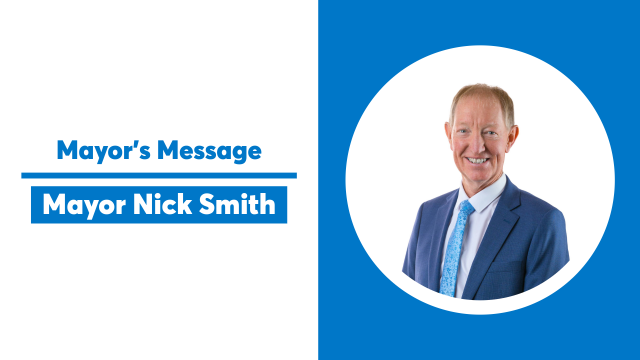Pragmatism and partnership hallmarks of Nelson’s recovery at second anniversary
16/08/2024 1:27am
Nelson City Council is well advanced in its recovery work from the August 2022 weather event due to innovative engineering in managing complex landslides, pragmatism in buying homes too expensive to make safe and a successful partnership with Government in sharing the costs of repairs and improving resilience.
“The most difficult political problem has been finding a solution for the homes put at risk by landslides but where the cost to make them safe exceeded their value. This has been a nightmare scenario for the families affected,” says Nelson Mayor Nick Smith.
“Our pragmatic solution of Council, with 50% Government funding, buying out these properties is well advanced. We have settled 10 out of 17 and my hope is to have all resolved this year.
“We are delivering on our commitment to build back better. It makes no sense to replace what failed in the August 2022 event but the extra cost of strengthening is adding tens of millions to the repair bill. I am confident Nelson would have much less damage were we to get a repeat of the August 2022 weather event albeit we are expecting more frequent and damaging storms with climate change.”
The financial pain of the storm is hitting Nelson households with the new rates bills, which include a $300 a year per household storm recovery charge for the next decade.
“Council is grateful for the support of Government in the $12.3 million deal that has offset the cost to ratepayers. This has been further boosted this week by a further $9 million of support from the new Regional Infrastructure Fund for strengthening the Maitai River stop banks and improving stormwater systems. Our Nelson storm recovery has been helped hugely by the successful partnership between central and local government.”
Fixing slips
Council staff have used a ground-breaking approach to resolve some of the more complex slips throughout Nelson.
More than 200 landslides were triggered in the event and fixing as many of these as possible remains the most complex part of the ongoing recovery work.
With Council working on 18 major locations within the urban area requiring a resilience lens, plus the locations within parks and reserves, many of the remediation projects called for a unique and creative approach.
Group manager of Infrastructure, Alec Louverdis, who was also the Civil Defence Group Controller for the weather event, says some of the sites presented unique challenges.
“For many of these projects consultants had to search further afield to explore options for remediation. We’ve had quite a few instances where they have found a little-known project from overseas, then applied that to our situations, creating a first of its kind fix for our region,” he says.
The Grampians and Brook Street are two projects where access presented the biggest challenge and required some innovative thinking. With no roads or driveways available, and many steep and slippery tracks, standard trucks were unable to reach the slip sites and specialist equipment (such as trucks on tracks which are similar to tracks on a digger) had to be brought in from outside the region.
Alec says each of the five slip sites on the Grampians have required a different approach.
“It’s imperative each site also includes stormwater improvements, as we continue to work towards stormwater resilience in our city,” he says.
A recently completed slip repair and prevention project on Brook Street was another project that required a complex solution.
A large catch-fence that included a combination of 16 vertical posts and 64 ground anchors drilled 6m into the hillside rock and underground with anchor ropes connecting it all together is designed to stop future landslides impacting nearby residents’ homes.
Major Milestones Achieved
- Repair of the water main from the Maitai Dam and SH6 repairs
- Repair of six major slips with nine additional slip sites under construction or phased to commence before the end of the year
- Fixing damage to 31 high priority stream/river bank sites
- Removal of 43,000m3 of gravel from rivers and streams across Nelson
- Repairing several slips and returning Cable Bay Road, Maitai Valley and Brook Street to 2-way traffic
- New bridge and pump track at Waahi Taakaro Golf Course
- Ten out of 17 properties bought out
- $31.7m of funding secured from Central Government – this includes the $12.3m buyout package, $9m from the Beyond the Deluge flood protection package, funding from the National Emergency Management Agency and NZTA.
- 97% of trails restored across Nelson reserves
A strong recovery takes time
The severity of the August 2022 weather event is still difficult for many to comprehend, an aspect which has also compounded the amount of time the remediation is taking.
Alec, when acting as Civil Defence Group Controller, described the amount of water flowing down the Maitai River as the equivalent of 500 VW Beetles per second, in comparison to just two at normal flow.
“The impact of the storm on our region was huge,” says Alec, “and there is a repair job to match. However, the fact that we have spent $50m of the proposed $90m recovery cost is a good indication that our work is on track and we are further ahead at this point than we initially anticipated.”
Storm recovery remains Nelson Mayor Nick Smith’s top priority and he says he knows the time it’s all taking is frustrating.
“We are at the hard-grind phase of the recovery. I know that the $300 levy is an extra burden at a tough time but am determined that we push ahead with the work to get the recovery job done,” he says.




